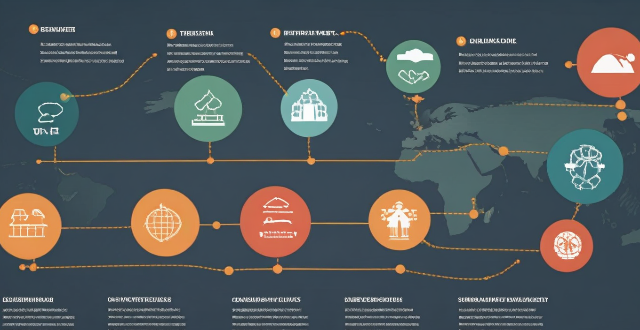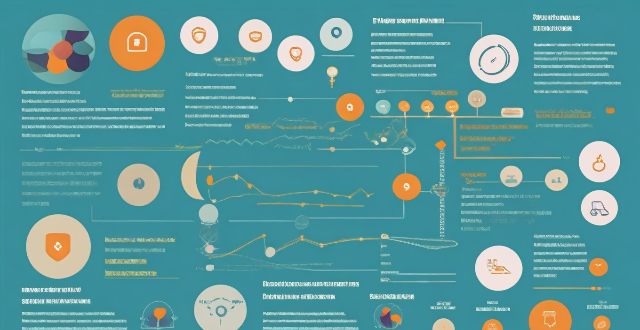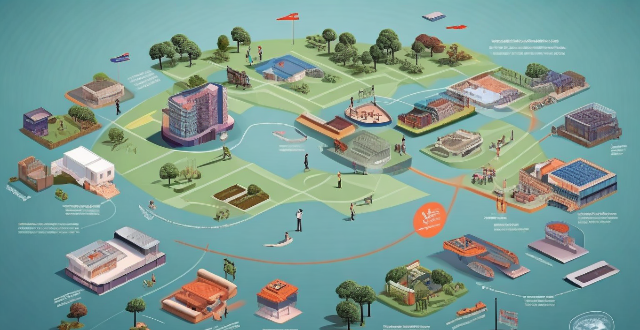Reporting Engagement

What are the most common ESG reporting frameworks used by companies ?
The Global Reporting Initiative (GRI) is a widely used sustainability reporting framework that provides a standardized approach for companies to report on their economic, environmental, and social performance. The GRI consists of several standards, including those related to disclosure principles, management approach, economic performance, environmental performance, social performance, governance, non-financial information disclosure, reporting principles, boundaries, guidelines, content, quality, frequency, language, format, timeframe, period, entities, scope, limitations, assurance, certification, training, tools, collaboration, innovation, stakeholder engagement, data quality, impact assessment, risk management, performance indicators, materiality analysis, and stakeholder engagement process. These standards help organizations prepare high-quality GRI reports that are accurate, reliable, and consistent across different organizations and sectors.

How does TCFD align with other global reporting initiatives like the Global Reporting Initiative (GRI) ?
The Task Force on Climate-related Financial Disclosures (TCFD) and the Global Reporting Initiative (GRI) are two global sustainability reporting frameworks that share several key points of alignment. Both provide guidelines for companies to report on their sustainability performance, with TCFD focusing specifically on climate-related financial disclosures and GRI covering a broader range of sustainability issues. They also emphasize the importance of materiality assessment, stakeholder engagement, risk management, and climate change disclosures in determining which aspects are most relevant to an organization's business model and strategy. By following both frameworks, companies can provide a more comprehensive picture of their sustainability performance and demonstrate their commitment to addressing climate change and other sustainability issues.

How does TCFD differ from other sustainability reporting frameworks ?
The Task Force on Climate-related Financial Disclosures (TCFD) is a unique sustainability reporting framework that focuses specifically on the financial risks and opportunities associated with climate change. It differs from other frameworks such as the Global Reporting Initiative (GRI) and the Sustainability Accounting Standards Board (SASB) in several key ways, including its exclusive focus on climate change, emphasis on financial implications, stakeholder engagement, specific recommendations for reporting, and integration with financial reporting. TCFD's approach helps companies effectively communicate their climate-related financial risks and opportunities, making it a valuable tool for navigating the complexities of climate change and its potential impact on their bottom line.

What ethical considerations should be taken into account when reporting on athletes' personal lives ?
The text discusses ethical considerations in reporting athletes' personal lives, emphasizing respect for privacy, accuracy and fairness, consent and participation, handling sensitive topics with care, public interest, age and maturity, cultural sensitivity, and aftermath support. It suggests that journalists should avoid intrusion, verify information, ask for permission, handle sensitive topics with care, consider age and maturity, recognize cultural differences, provide resources for support, and follow up responsibly. The text concludes that reporting on athletes' personal lives requires a nuanced approach that prioritizes ethics over sensationalism to maintain integrity while informing the public about the human aspects of sports figures they admire.

How can I improve my social media engagement ?
To improve social media engagement, create high-qualityTo improve social media engagement, create high-quality audience, collaborate with other accounts collaborate with other accounts, use hashtags strategically, and analyze your performance regularly.

How can I encourage active engagement in a study group ?
This article discusses strategies for encouraging active engagement in a study group, including setting clear goals and objectives, fostering a collaborative environment, assigning roles and responsibilities, providing opportunities for feedback and reflection, using technology to facilitate engagement, and offering incentives for participation. The author emphasizes the importance of active engagement for the success of a study group and encourages readers to make it a priority from the start.

What are some innovative teaching methods that can enhance student engagement ?
Innovative teaching methods, including Project-BasedInnovative teaching methods, including Project-Basedroom, Gaming and Simulation Gaming and Simulations, Peer Teaching and Tutoring, Technology Integration, and Service Learning, are designed to enhance student engagement by fostering critical thinking, problem-solving, collaboration, and real-world application of knowledge. These approaches aim to make learning more interactive, relevant, and enjoyable for students, ultimately contributing to their academic success and personal growth.

What are the best practices for businesses to report on their environmental impact as part of their CSR initiatives ?
Reporting on environmental impact is crucial for businesses as part of their CSR initiatives. Best practices include setting clear objectives and goals, collecting relevant data, analyzing environmental footprint, developing an action plan, communicating findings, encouraging stakeholder engagement, and continuously improving the reporting process. By following these steps, businesses can demonstrate their commitment to sustainability and transparency while providing valuable information to stakeholders about their environmental performance.

How does TCFD affect corporate reporting ?
The Task Force on Climate-related Financial Disclosures (TCFD) has significantly impacted corporate reporting by requiring enhanced disclosure of climate-related risks and opportunities. Companies must identify, assess, and manage these risks, including through scenario analysis and governance processes. They also need to disclose how climate change affects their business model and strategy, as well as the alignment of their portfolio with a low-carbon transition. Operational performance metrics such as emissions data and energy use must be reported, along with information on positive impacts and innovation related to climate action. Overall, the TCFD guidelines aim to promote transparency and encourage companies to integrate sustainability into their financial decision-making processes.

What role does technology play in improving environmental monitoring ?
Technology plays a pivotal role in enhancing environmental monitoring by enabling advanced data collection, analysis, visualization, reporting, and conservation efforts. Satellite imagery, drone surveillance, sensor networks, big data analytics, GIS, real-time reporting systems, and early warning technologies are among the key tools used. These advancements not only improve our understanding of environmental changes but also aid in managing resources and raising public awareness about ecological issues.

How can businesses measure and report their environmental performance throughout their supply chains ?
Measuring and reporting environmental performance in supply chains involves setting clear objectives, conducting a baseline assessment, developing an action plan, implementing and monitoring progress, and reporting performance transparently. Adopting standardized metrics, engaging stakeholders, and continuously improving are best practices to effectively manage environmental impact throughout the supply chain.

What role does media coverage play in shaping public opinion on climate skepticism ?
The text discusses the role of media coverage in shaping public opinion on climate change and climate skepticism. It highlights the influence of biased reporting, sensationalism, balanced coverage, source credibility, and audience perception on how individuals form their beliefs and attitudes towards these issues. The text emphasizes the importance of accurate, balanced, and transparent reporting by media outlets to ensure that the public is well-informed and able to make informed decisions based on evidence.

How can educational technology enhance student engagement ?
The text discusses how educational technology can enhance student engagement. It outlines various methods such as personalized learning, interactive content, collaborative tools, real-time feedback, and flexible learning options that educators can use to improve student participation and performance in the classroom.

How can we involve community members in climate adaptation planning ?
Community engagement is crucial for successful climate adaptation planning. To involve community members, identify and engage stakeholders, develop a stakeholder engagement plan, use multiple channels of communication, involve community members in decision making, provide training and education, foster partnerships and collaboration, and monitor and evaluate progress. By doing so, you can create a more resilient community that is better prepared for the impacts of climate change.

How do remote education platforms ensure student engagement ?
The text discusses the strategies that remote education platforms use to ensure student engagement. These strategies include personalized learning experiences, interactive content, collaborative learning, gamification, real-time feedback, social learning, and flexibility and accessibility. By implementing these strategies effectively, remote education platforms can create an engaging and motivating learning environment for students around the world.

How has augmented reality transformed fan engagement in sports ?
Augmented Reality (AR) is revolutionizing fan engagement in sports by offering immersive experiences that blend physical and digital elements. AR enhances viewing experiences with interactive overlays and virtual seats, enables in-game interaction through team and player interaction and game day activities, boosts merchandise and sponsorship opportunities with interactive ads and virtual try-ons, aids navigation and wayfinding in stadiums, and encourages social sharing through augmented selfies and virtual reality social spaces. These advancements are transforming the way fans connect with sports and teams, creating more engaging and interactive experiences.

How do online learning platforms enhance student engagement and performance ?
The article discusses how online learning platforms enhance student engagement and performance. It mentions personalized learning experiences, interactive content and multimedia, collaboration and communication tools, gamification and rewards, flexibility and convenience, and immediate feedback and support as key features of these platforms that contribute to improved student outcomes.

How will the concept of citizen engagement change in future cities ?
This essay explores the future of citizen engagement in cities, influenced by technological advancements like AI and IoT, social media platforms, and demographic changes. Potential changes include increased participation through virtual town halls and online voting systems, greater transparency via open data and public dashboards, and more collaborative approaches such as co-creation workshops and community-led projects. The essay emphasizes the importance of adapting strategies for engaging with citizens to ensure vibrant, inclusive, and sustainable urban communities.

How can a sports stadium be designed to enhance fan engagement and experience ?
Designing a sports stadium to enhance fan engagement and experience requires careful consideration of various factors. These include seating arrangements, technology integration, amenities, and more. Key strategies for designing an engaging stadium involve creating premium seating options near the field, ensuring good viewing angles, providing comfortable seating, offering strong Wi-Fi connectivity, developing mobile apps, installing large screen displays, integrating interactive features, offering a variety of food and beverage options, ensuring ample restroom facilities, creating merchandise stores, designating family-friendly areas, using music and lighting effects to create an energetic atmosphere, encouraging fan interaction through contests and giveaways, and planning themed events around holidays or special occasions. By prioritizing these factors, you can ensure that your sports stadium becomes a destination for sports enthusiasts seeking an exceptional experience.

How can businesses incorporate climate action into their operations ?
Incorporating climate action into business operations is a multifaceted approach that involves strategic planning, process optimization, and continuous improvement. This comprehensive guide outlines key steps businesses can take to integrate sustainable practices into their operations. The urgency of addressing climate change has become a global imperative. Businesses play a pivotal role in this transition, as they are not only significant contributors to greenhouse gas emissions but also hold the potential to drive innovation and implement sustainable solutions. Strategic Planning - Set Clear Objectives - Conduct an Environmental Audit Operational Optimization - Energy Management - Waste Reduction - Water Stewardship - Sustainable Transportation Continuous Improvement - Employee Training and Engagement - Stakeholder Engagement - Innovation and Research - Reporting and Transparency Integrating climate action into business operations demands a proactive and strategic approach. By setting clear objectives, optimizing operations, engaging stakeholders, and continuously improving, businesses can significantly reduce their environmental footprint while contributing positively to the global effort against climate change.

How do investors evaluate a company's CSR performance related to climate change when making investment decisions ?
When making investment decisions, investors consider a company'When making investment decisions, investors consider a company' Responsibility (C investors consider a company's Corporate Social Responsibility (CSR) performance related to climate change. The article discusses how investors evaluate a company's CSR performance related to climate change when making investment decisions. The first step in evaluating a company's CSR performance related to climate change is to assess its environmental impact. Investors look at the company's carbon footprint, energy consumption, waste management practices, and other environmental metrics to determine its impact on the environment. Companies with lower carbon emissions and better waste management practices are considered more sustainable and attractive to investors. Investors also evaluate a company's sustainability reporting practices. Companies that provide detailed reports on their environmental impact, social responsibility initiatives, and governance practices are seen as more transparent and accountable. Another important factor that investors consider is a company's use of renewable energy sources. Companies that rely heavily on fossil fuels for their operations are considered less sustainable than those that use renewable energy sources such as solar or wind power. Carbon offsetting programs are another way that companies can demonstrate their commitment to reducing their carbon footprint. Finally, investors evaluate a company's stakeholder engagement practices related to climate change.

How does the globalization of sports media affect fan engagement and consumption patterns ?
The globalization of sports media has significantly impacted fan engagement and consumption patterns. Enhanced accessibility through live streaming, on-demand content, and digital platforms has revolutionized how fans watch and interact with sports. Diverse content offerings, including international coverage and multilingual broadcasts, have expanded the reach of sports to global audiences. Personalized experiences through customized content and fantasy sports have increased fan engagement. Additionally, virtual events, e-sports, and online tournaments provide new opportunities for fans to participate and engage. Changes in consumption patterns, such as a shift towards digital subscription models and online merchandise shopping, reflect the evolving landscape of sports media. Overall, the globalization of sports media has transformed the way fans consume and enjoy sports worldwide.

What role do sports organizations play in fostering community engagement and participation ?
The text discusses the role of sports organizations in fostering community engagement and participation. It highlights their contributions in various areas including community building, educational outreach, economic impact, and social responsibility. Sports organizations promote social interaction by offering memberships, organizing events, and providing volunteer opportunities. They enhance diversity and inclusion through inclusive policies, adaptive sports programs, and cultural celebrations. In terms of educational outreach, they promote health and wellness through fitness programs, workshops, and school collaborations. They also develop life skills such as leadership, character development, and career opportunities. Sports organizations stimulate local economies by hosting tournaments and events, promoting sports tourism, and creating jobs. They support local businesses through partnership programs, community marketplaces, and merchandise sales. Additionally, sports organizations demonstrate social responsibility by adopting green initiatives, planning eco-friendly events, launching educational campaigns, organizing fundraising events, having athlete ambassadors, and offering matching gift programs. Overall, sports organizations play a crucial role in building social connections, enhancing diversity and inclusion, providing educational outreach, stimulating local economies, and embracing social responsibility.

What is the role of public participation and stakeholder engagement in the development of climate and environmental policies ?
The article discusses the importance of public participation and stakeholder engagement in developing climate and environmental policies. It highlights that these processes enhance transparency, build consensus, provide local knowledge, identify gaps and priorities, promote equity and fairness, facilitate implementation and compliance, and promote innovation. Overall, involving a diverse range of stakeholders in the policy-making process leads to more effective, equitable, and sustainable solutions to environmental challenges.

What challenges do companies face while implementing TCFD disclosures ?
The text discusses the challenges that companies face in implementing TCFD disclosures. These challenges include data availability and quality, technical expertise and capacity, regulatory and legal requirements, stakeholder engagement and communications, and integrating TCFD into business strategies. Companies need to address these challenges by building capacity, improving standards, and enhancing transparency around climate-related risks and opportunities.

Why is it important to use a carbon footprint calculator for individuals and businesses ?
The importance of using a carbon footprint calculator is highlighted for individuals and businesses. For individuals, it helps in understanding personal impact, raising awareness, motivating behavior change, setting goals, and contributing to global efforts. For businesses, it aids in corporate responsibility, cost savings, compliance and reporting, enhancing brand image, stakeholder engagement, risk management, and innovation. Using a calculator empowers both to make informed decisions for a sustainable future.

What are the legal obligations for companies regarding their carbon footprint ?
Companies face various legal obligations concerning their carbon footprint aimed at reducing greenhouse gas emissions and mitigating climate change. These include mandatory and voluntary emissions reporting, regulatory compliance through emissions caps and permitting, corporate governance measures like board oversight and stakeholder engagement, financial responsibilities such as carbon taxes and trading schemes, commitments under international agreements, and potential civil liabilities for negligence or human rights violations related to pollution. Companies must take proactive steps to reduce emissions, engage stakeholders, and contribute positively to global climate action, with specific requirements depending on the jurisdiction, industry, and individual company's commitments.

How can sports media cover events in a way that celebrates multiculturalism ?
Sports media can celebrate multiculturalism by embracing diversity in reporting, celebrating cultural traditions, promoting inclusive commentary, and educating audiences. This includes highlighting athlete backgrounds, language inclusivity, featuring pre-game and halftime shows, fan engagement, diverse commentary teams, and interactive education. By doing so, sports media can become a platform for cultural exchange and celebration, enriching the viewing experience and fostering greater understanding among diverse audiences worldwide.

Does sports sponsorship have an impact on the fan engagement and loyalty towards a team or event ?
The influence of sports sponsorship on fan engagement and loyalty is multifaceted, with potential positive impacts such as enhanced brand visibility, improved attendance and viewership, and community involvement. However, there are also potential negative effects like overcommercialization concerns and misaligned brand values. The impact can vary based on factors including team performance and fan demographics.

How can we ensure fair vaccine distribution globally ?
The text discusses the importance of ensuring fair vaccine distribution globally, emphasizing collaboration among nations, the role of international organizations, engagement of pharmaceutical companies, capacity building in developing countries, transparency and accountability, legal and ethical frameworks, and flexibility in approach. It suggests strategies such as sharing resources, knowledge exchange, coordination by organizations like WHO, monitoring distribution, fair pricing by companies, technology transfer, infrastructure development, training healthcare workers, open communication, public reporting, international agreements, ethical considerations, adaptive strategies, and continuous assessment to achieve equitable distribution. The conclusion highlights the need for a multifaceted approach involving collaboration, coordination, capacity building, transparency, and adaptability to ensure fair vaccine distribution globally.